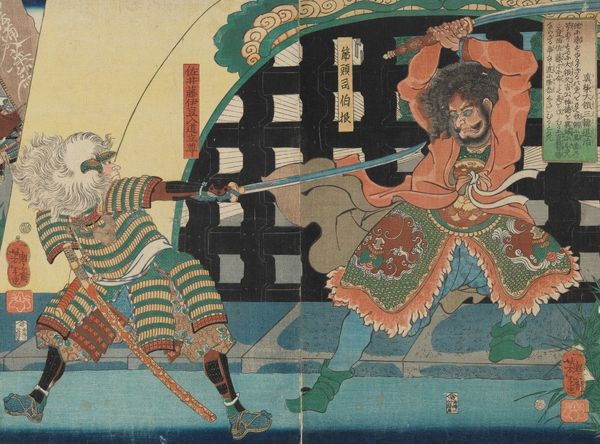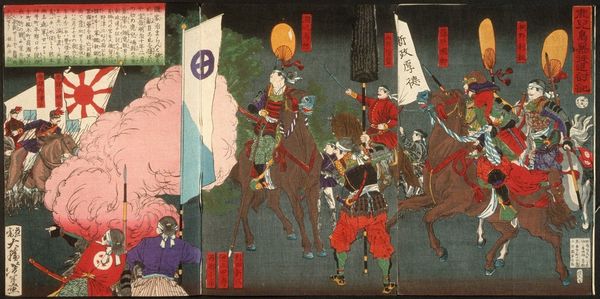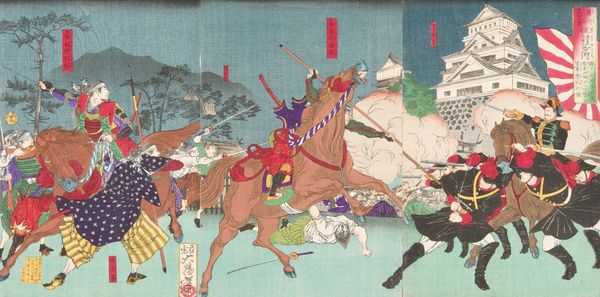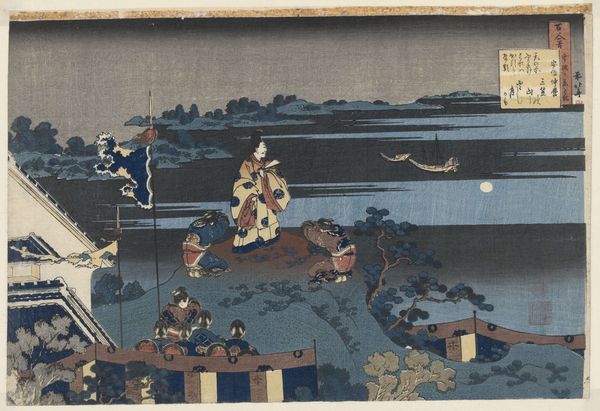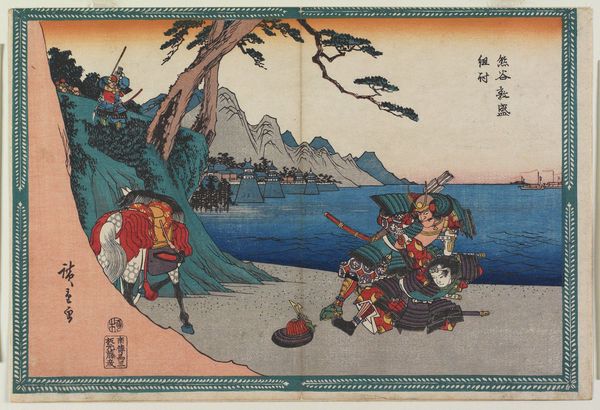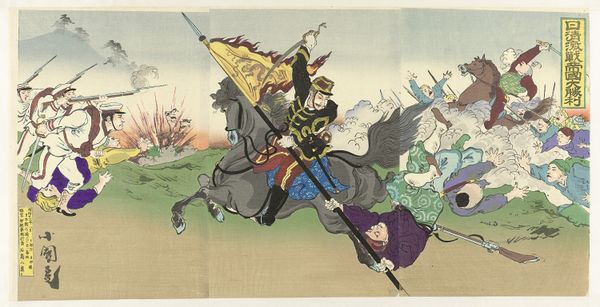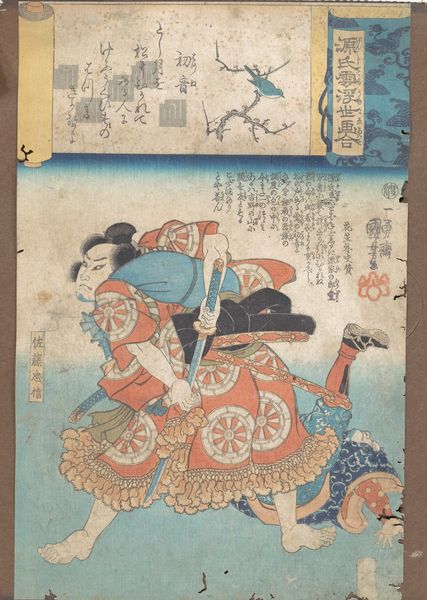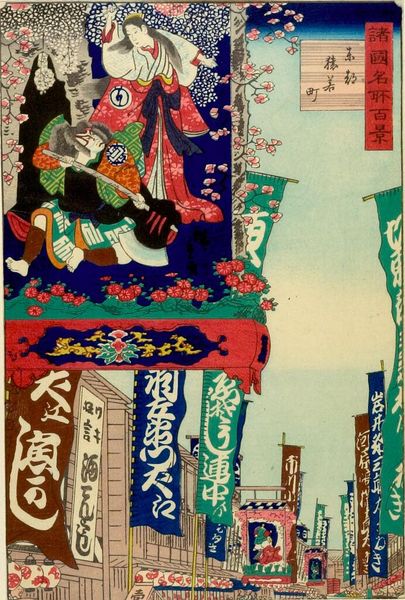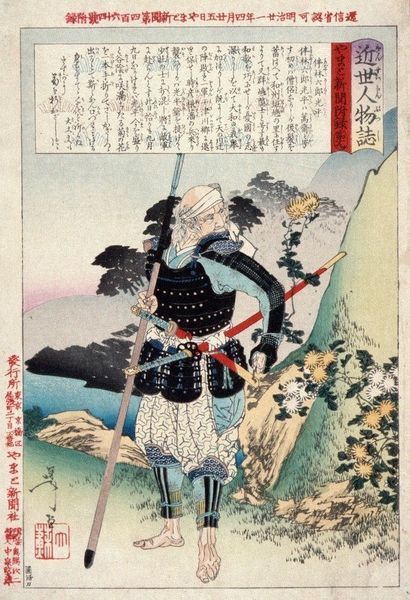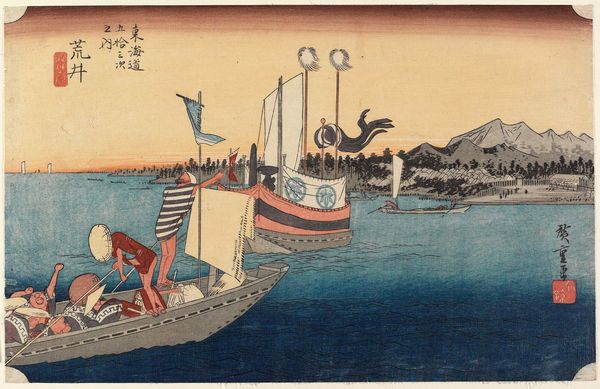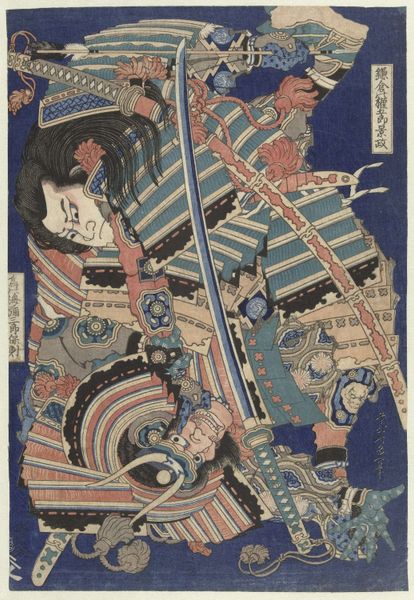
print, ink, woodblock-print
# print
#
asian-art
#
landscape
#
ukiyo-e
#
japan
#
ink
#
woodblock-print
Dimensions: 9 5/8 × 14 1/8 in. (24.4 × 35.9 cm) (image, horizontal ōban)
Copyright: Public Domain
Curator: Welcome. Today, we’re looking at Utagawa Hiroshige's woodblock print, "At Changban Bridge," created around 1835 to 1839. It's part of the collection at the Minneapolis Institute of Art. What's your first take on this piece? Editor: The scene is immediately striking—it projects such dynamic energy, and there’s a certain tension conveyed by the central figure, isolated on the bridge against a wider landscape filled with wreckage. Curator: Hiroshige was, of course, a master of the Ukiyo-e print. Considering this is a print, let's appreciate the materiality; it involves multiple blocks, painstakingly carved to transfer Hiroshige's design using ink onto paper, making multiples available for a broader public. Editor: Absolutely. And within this context of woodblock printing, this scene depicts Zhang Fei, a fierce warrior from the "Romance of the Three Kingdoms," standing guard. This instantly calls on associations with courage and legendary strength, right? Notice his piercing glare and the spear held aloft - clear visual markers for power. Curator: The red and orange in the wreckage contrasts with the cool blues and greens, adding to the print's drama. One wonders about the skill required to manage this layering of colour from multiple blocks. But is there more to this scene than martial prowess? Editor: I think so. The desolate landscape carries a weight of the past battles, maybe symbolizing the cost of conflict. And how that one figure becomes a solitary guardian, embodying resistance. Zhang Fei standing tall amid the remnants could signal an important narrative within the culture, a specific inflection of how moral rectitude triumphs even amongst the consequences of chaos. Curator: Interesting point. The economical yet precise lines used for the rocks, the bridge, they all contribute to the sense of depth. Hiroshige’s clever manipulations of color gradation creates both mood and spatial depth, really allowing the scene to breathe, given the flat picture plane inherent to this print-making. Editor: And look how the stylized waves hint at the bridge's precariousness. The bridge itself almost reads as a symbol of a transition, the point between worlds disrupted, or a journey fraught with peril, and is then overcome through a single figure’s determined resistance. Curator: So, by observing this specific printing process, the craftsmanship becomes intertwined with cultural narratives. It brings up interesting questions regarding accessibility versus exclusivity of art ownership, too. Editor: I’ll walk away thinking about those iconic symbols. Curator: And I am considering how printmaking, in Hiroshige’s expert hands, blurred boundaries and delivered high art to wider audiences.
Comments
No comments
Be the first to comment and join the conversation on the ultimate creative platform.
